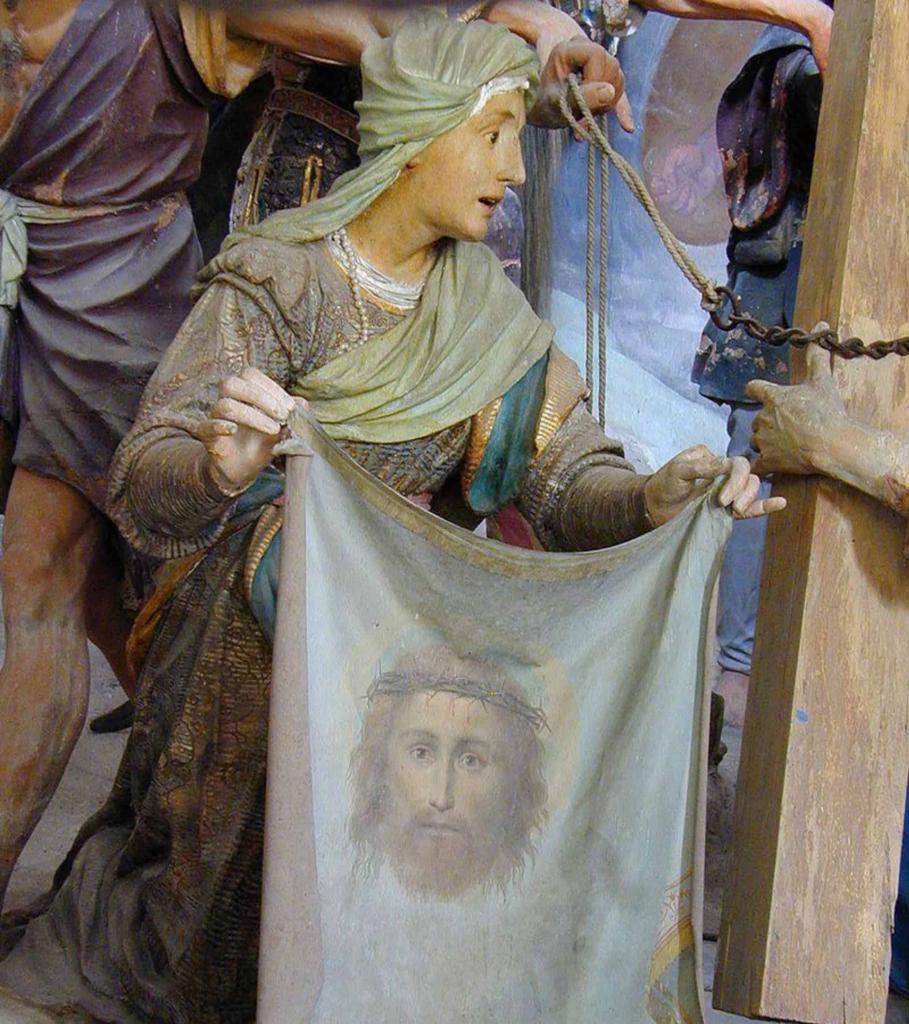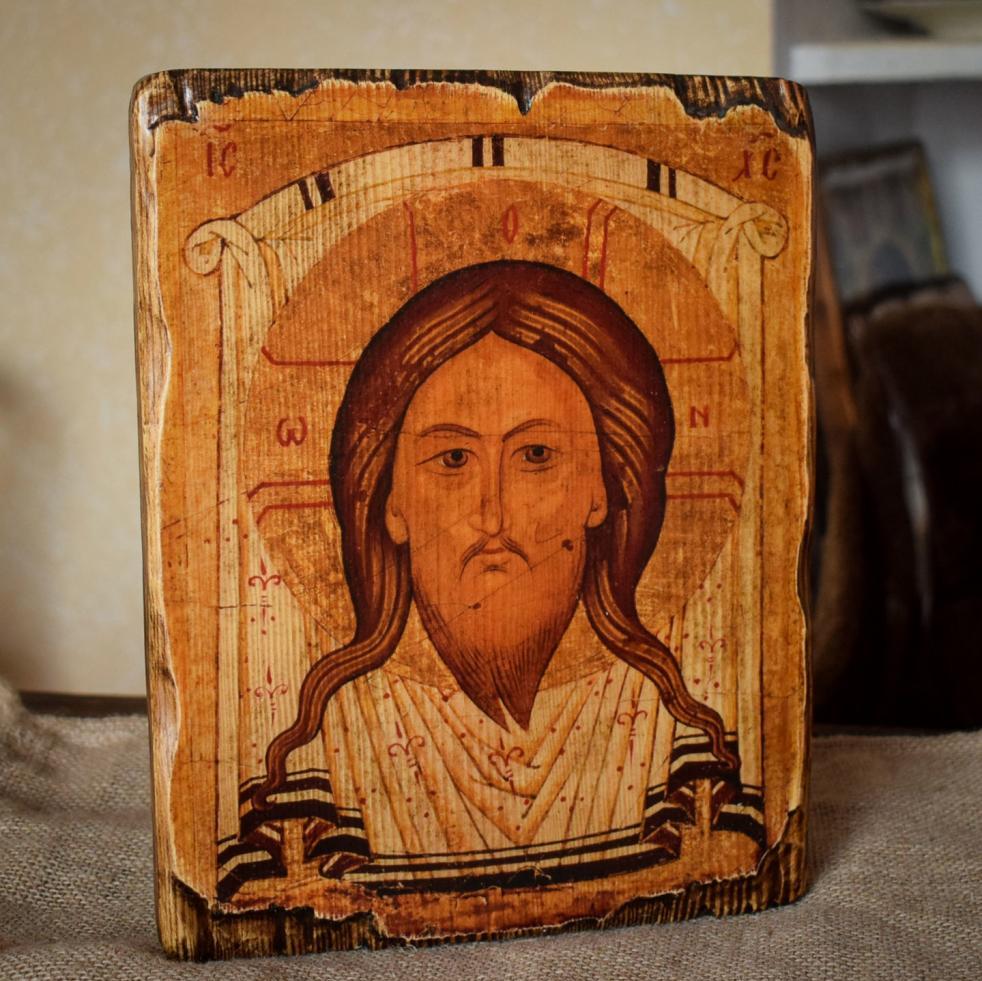It is not known for certain how he looked in his earthly life. 27 canonical and over 100 apocryphal books of the New Testament do not give us even a hint of its appearance. The descriptions of his appearance that historians, philosophers and theologians of later eras left to us sound so contradictory that sometimes it seems as if they were talking about different people. So, perhaps, the Bishop of Lyon was right when he claimed that the bodily appearance of the face of Jesus Christ was unknown to us. Yes, it is unknown, if you do not take into account one of the most important shrines of the Christian world - the Savior Not Made by Hands, whose history of origin is still shrouded in secrets.
Testimonies of Jesus' Contemporaries
It is impossible to briefly tell the story of the Holy Savior. The very first detailed description of the appearance of Jesus Christ was left to us by the proconsul of Palestine Publius Lentula in his letter to the Roman Caesar: “This man is versatilely gifted. His name is Yeshua Ga-Mashiach. He has a beautiful and noble face, a harmonious body structure. His hair is the color of ripe walnut. Strength and calm emanate from his face. It is ruddy and without a single flaw. He has blue and radiant eyes. ”
Only the majority of historians consider this letter a fake, because in the annals of Roman history the proconsul Publius Lentula does not appear. The very first hand-drawn images of Jesus Christ that history has preserved for us portrayed the Savior as looking more like a typical Roman than a Jew or a Greek. Decent clothing of a Roman citizen, short-cropped hair, clean-shaven face. In the first written testimonies of the appearance of the Savior, Jesus Christ was portrayed as a plain man. So what was he really like? Is there at least one plausible description of it? At least one lifetime portrait? Yes there is. More precisely, it existed.
The terminal illness of Avgira
1st century AD, Edessa. The king of Edessa suffered from leprosy, a terrible incurable disease. The court healers tried all the means known to them and were already desperate to help the king. Then the governor decided to turn to Jesus Christ for help, because he had heard about his miraculous deeds. He sent ambassadors and a court painter to him, so that he would necessarily depict Christ on canvas. Jesus received the ambassadors and sent his disciple to the king. However, the ambassadors could not go back, because the artist was not able to capture the features of Jesus on canvas. Then the Savior decided to help him. He washed, wiped his face with a towel, and the face of Jesus was miraculously imprinted on it. Since then, we pass on the history of the origin of the Savior Not Made by Hands to children and adults. People believe in the truth of this event.
Legends of the Miraculous Image
The legend of the Miraculous Image first appears in the history of Evagrius Scholastic - a historian of the 6th century. Talking about the siege of Edessa in 545 by the Persian army, Evagrius recalls the ancient legend of the king’s correspondence with Christ and the history of the appearance of Ubrus. But why, for five hundred years, was nobody aware of the holy relic of this magnitude? Maybe this is just a beautiful fairy tale? No, not fiction and not a fairy tale.
There are a large number of genuine documents confirming the fact of the correspondence of the Assyrian king with the Savior. Two sources deserve special trust. This is the church history of Eusebius of Caesarea and the early Syrian literary monument “The Teaching of Addai”. The story of Avgar in the history of Eusebius is the chronologically first of all surviving versions of the legend. Eusebius wrote his story in Greek. The Syriac translation of this book is stored in Moscow, in the collections of manuscripts of the Russian National Library.

Eusebius himself told that the story of Avgar was taken from a written Syrian source. At the same time, he constantly claimed that the document was in the archives of Edessa, emphasizing that the legend was translated from the Syriac language. One of the options for the manuscript of Eusebius of Caesarea was in the British Museum. It is somewhat younger than what is stored in Moscow. Nevertheless, neither one nor the other manuscript contains a word about the history of the creation of the Holy Savior. And it torments the minds of many people. The Teaching of Addai also does not mention the history of the icon of the Savior Not Made by Hands. Although about Avgar, his incurable disease and correspondence with Christ tells in great detail.
The Sacred Gate of Edessa
In order to unravel the mystery of the five hundred year silence about Ubrus, we will return to Edessa of the first century AD. The king had two palaces - winter and summer. The first was built on an elevation to protect against floods, and the second was located near two sources that supplied the royal ponds with water. From time immemorial, fish have been found in these ponds. It was considered sacred in pagan times. This fish still swims in ponds near the ruins of a palace complex in a modern Turkish city.
Entrance to the winter palace of Avgar led through a huge western gate. Since the king’s ambassadors passed through them with the letter of Jesus and the Holy Savior, these gates began to be called Sacred. After his healing, the king believed in Christ and his mission, and ordered the construction of the first Christian church in Edessa. As a result, the Temple of the Savior Not Made by Hands appeared. Later, a disciple of Christ preached in it, sent to the king to heal. Levi Thaddeus (Addai) finally cured Avgar of a terrible disease.
The miraculous deeds of the Holy Image
The son of King Avgar continued to patronize Christianity. But the grandson was an inveterate idolater. And, of course, most of his subjects returned to paganism. To save the Savior Not Made by Hands and the history of his origin from desecration, the Bishop of Edes ordered to hide him. Christians walled up a relic over the gates of Edessa.
Legend has it that the image was additionally covered with tiles, protecting it from the weather. An unquenchable candle was placed in front of the relic. Only at the end of the 6th century, when the Persian shah approached Edessa, did a certain Eulaly see that the city was saved above its gates. The niche was open, and then not only the holy ubrus was found, but also an unquenchable candle. But the most interesting thing is that on the tile that covered the image, the very image that the white linen fabric carried on it was imprinted. According to legend, Bishop Eulaly took the Holy Image in his hands and walked through the city with prayers. At that moment, the fire kindled by the Persians around the walls of the city turned against themselves. The Persian king immediately retreated from Edessa.

Since that time, the Savior Not Made by Hands, the history of the origin of which worries many scientists so far, has repeatedly helped the inhabitants of the city. Rumors about him spread quickly. On April 4, 622, Emperor Heraclius, speaking in a war against the Persians, personally raised the Savior's Miraculous Image before the army and pronounced the oath: “Fight enemies before death, but live in love and harmony among themselves.”
In 639, Arabs captured Edessa. However, they allowed residents of the city to freely practice their faith and did not touch any of the Christian churches. Moreover, not only the citizens of Edessa, but also pilgrims from other countries were allowed to worship at the place where the Holy Image was kept.
From Edessa to Constantinople
Emperor Konstantin Porfirorodny many times appealed to the mayor of Edessa, Amir, with a request to sell the Holy Image and the message of Christ to Avgar. In the end, Amir agreed to the conditions of Constantine, but in response he demanded that he pledge never to attack the Assyrian cities. The Christians of Edessa did not want to give up the priceless shrine that kept and saved their city from the conquerors. But Amir made them give in. So the Holy Image and the message of the Savior to Avgar were transferred from Edessa to Constantinople. After the Savior of the Miraculous was transferred, the relic was forever hidden from the eyes of believers in a golden casket.
Crusader raid
In 1204, the crusaders, having seized Constantinople by attack, stole all the Christian shrines stored in the church. They divided among themselves the prey, part of which was sent to Venice, and the other to France. The most important items were sent precisely to Venice, where they are preserved and open for the celebration and worship of Christians. It is still unknown how many ships of the crusaders were sent to Venice, but there is evidence that one of them sank in the Sea of Marmara.
Our days
According to one version, it was on this ship that the relic was brought, and supposedly, the icon of the Savior Not Made by Hands and the history of its creation have sunk forever in sea waters. According to another version, the head of the expedition managed to transport him to Venice. Then the image came to Genoa by the doge of Leonardo Montaldo and was stored there from 1360 to 1388 in his family prayer chamber. July 8, 1388 the Holy Image, according to the will of Montaldo, was solemnly transferred to the church of St. Bartholomew. Many modern historians believe that the real Savior Not Made by Hands, whose history of origin was never confirmed, are in Rome, in the church of St. Sylvester. Whether this is so is unknown.